分子别名(Synonym)
FLJ18683,T3E,TCRE,CD3E,CD3-epsilon
表达区间及表达系统(Source)
Human CD3 epsilon, His Tag (CDE-H5223) is expressed from human 293 cells (HEK293). It contains AA Asp 23 - Asp 126 (Accession # P07766-1).
Predicted N-terminus: Asp 23
Request for sequence
蛋白结构(Molecular Characterization)

This protein carries a polyhistidine tag at the C-terminus. The protein has a calculated MW of 16.9 kDa. Maybe caused by unknown PTMs, the protein migrates as 18-19 kDa and 21-22 kDa when calibrated against Star Ribbon Pre-stained Protein Marker under reducing (R) condition, and 35-43 kDa under non-reducing (NR) condition (SDS-PAGE).
内毒素(Endotoxin)
Less than 1.0 EU per μg by the LAL method.
纯度(Purity)
>90% as determined by SDS-PAGE.
>90% as determined by SEC-MALS.
制剂(Formulation)
Lyophilized from 0.22 μm filtered solution in PBS, pH7.4 with trehalose as protectant.
Contact us for customized product form or formulation.
重构方法(Reconstitution)
Please see Certificate of Analysis for specific instructions.
For best performance, we strongly recommend you to follow the reconstitution protocol provided in the CoA.
存储(Storage)
For long term storage, the product should be stored at lyophilized state at -20°C or lower.
Please avoid repeated freeze-thaw cycles.
This product is stable after storage at:
- -20°C to -70°C for 24 months in lyophilized state;
- -70°C for 12 months under sterile conditions after reconstitution.
电泳(SDS-PAGE)
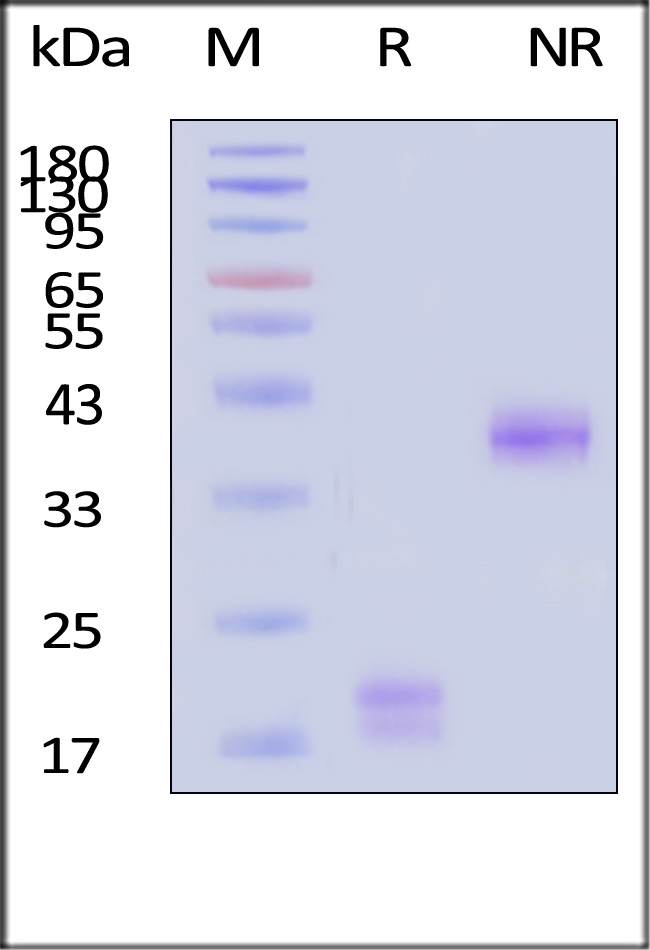
Human CD3 epsilon, His Tag on SDS-PAGE under reducing (R) and non-reducing (NR) conditions. The gel was stained with Coomassie Blue. The purity of the protein is greater than 90% (With Star Ribbon Pre-stained Protein Marker).
SEC-MALS
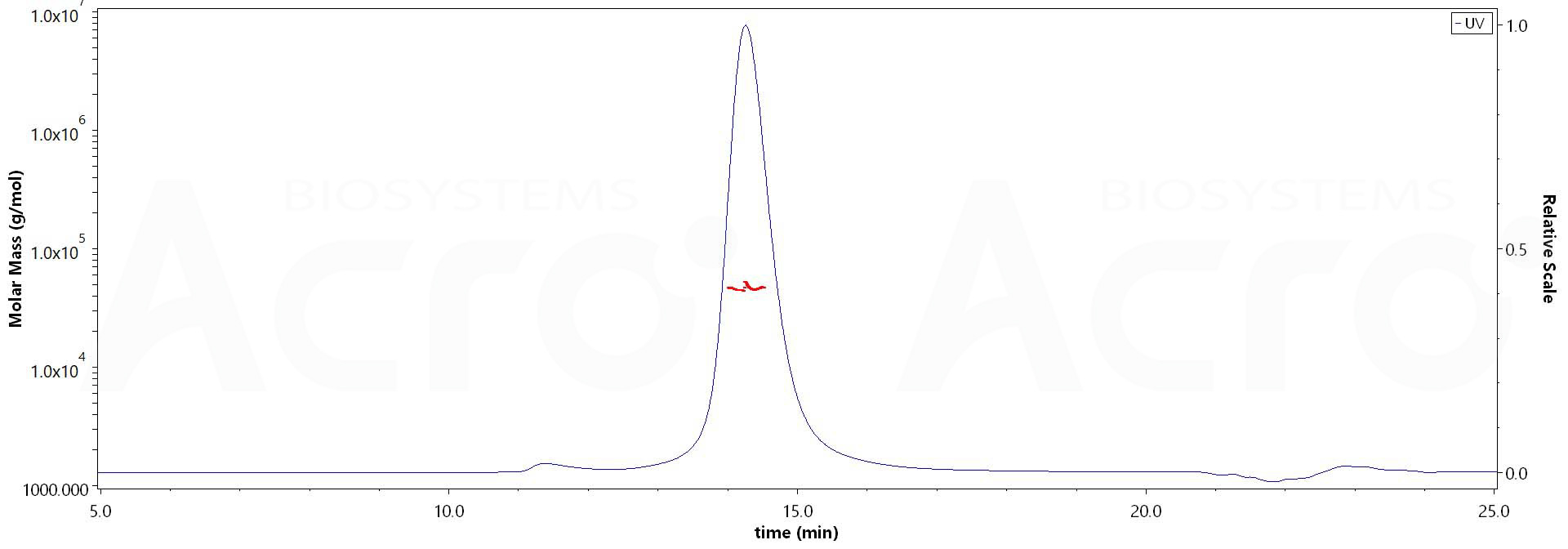
The purity of Human CD3 epsilon, His Tag (Cat. No. CDE-H5223) is more than 90% and the molecular weight of this protein is around 35-50 kDa verified by SEC-MALS.
Report
活性(Bioactivity)-ELISA
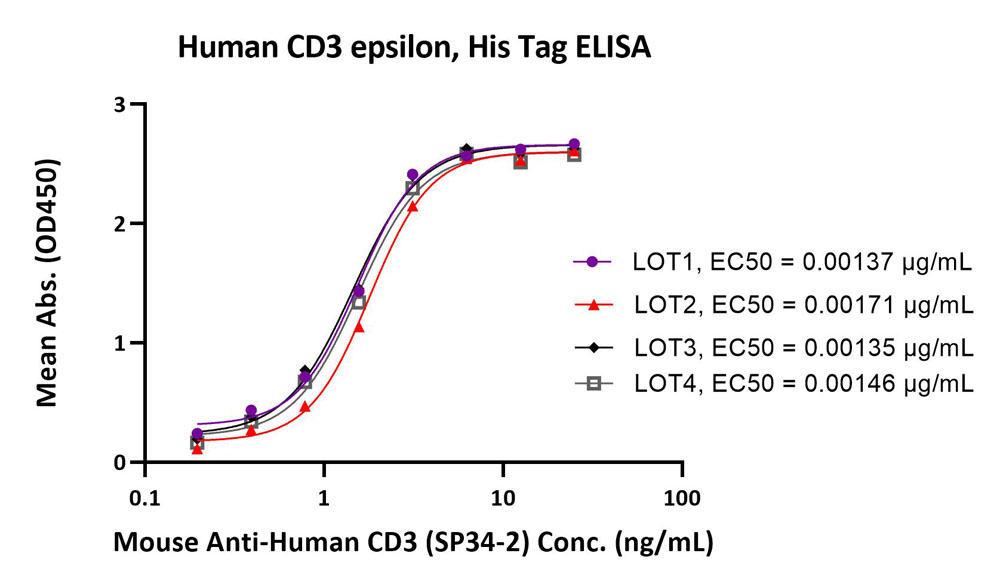
Immobilized Human CD3 epsilon, His Tag (Cat. No. CDE-H5223) at 1 μg/mL (100 μL/well) can bind Mouse Anti-Human CD3 (SP34-2) with a linear range of 0.2-3 ng/mL (QC tested).
Protocol
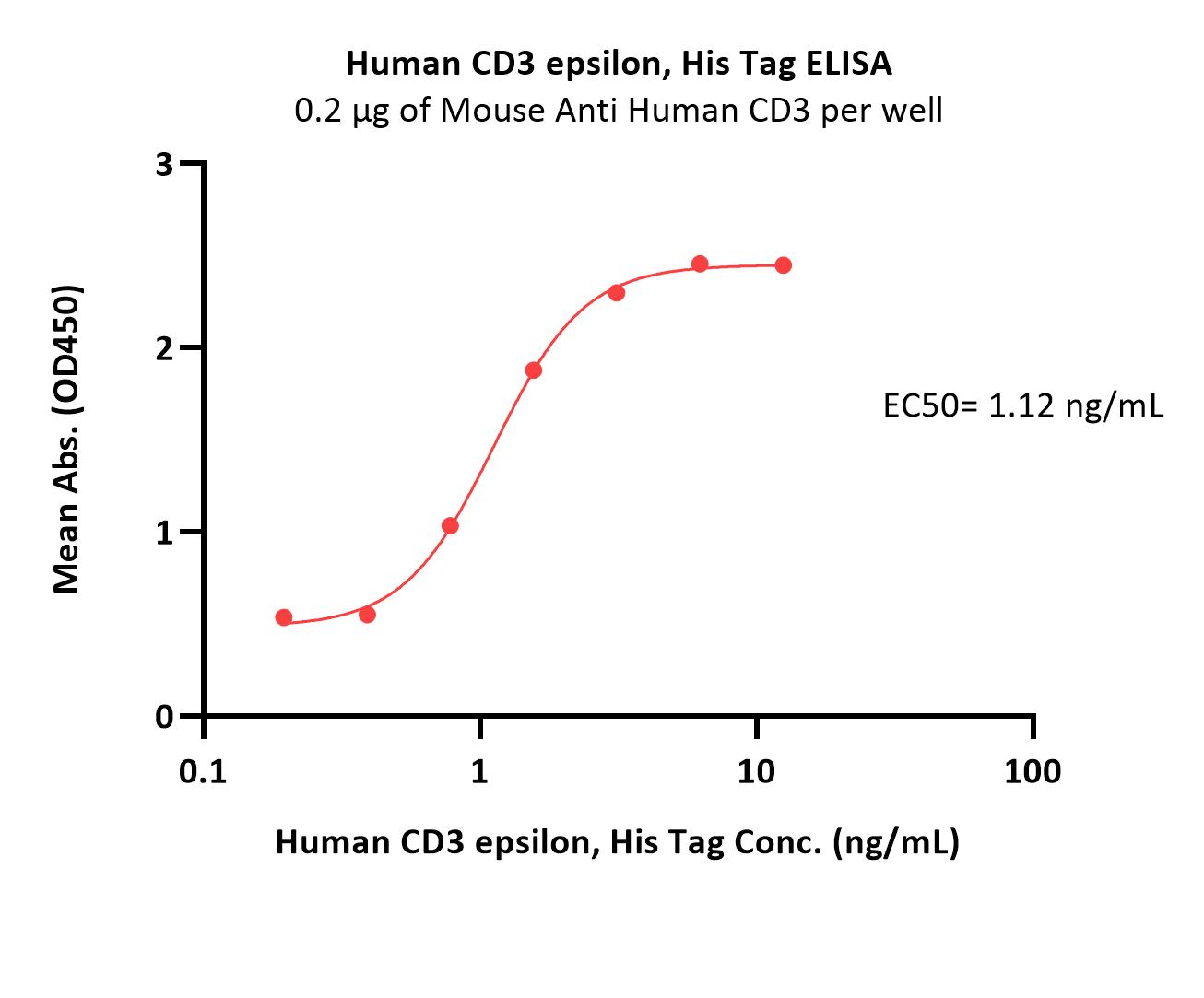
Immobilized Mouse Anti Human CD3(SP-34) at 2 μg/mL (100 μL/well) can bind Human CD3 epsilon, His Tag (Cat. No. CDE-H5223) with a linear range of 0.2-2 ng/mL (Routinely tested).
Protocol
活性(Bioactivity)-SPR

Monoclonal Anti-Human CD3 Antibody, Mouse IgG1 (SP34-2) (Cat. No. CDE-M531) captured on CM5 chip via anti-mouse antibodies surface can bind Human CD3 epsilon, His Tag (Cat. No. CDE-H5223) with an affinity constant of 0.394 nM as determined in a SPR assay (Biacore 8K) (Routinely tested).
Protocol
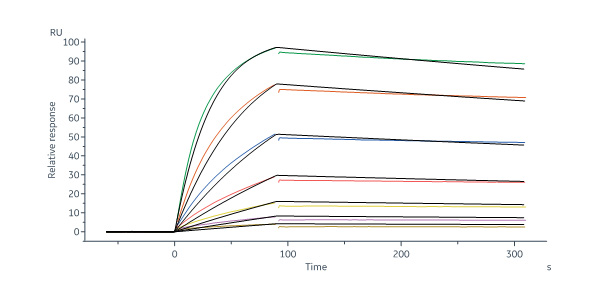
Bispecific T-cell Engager captured on Protein A Chip can bind Human CD3 epsilon, His Tag (Cat. No. CDE-H5223) with an affinity constant of 0.843 nM as determined in a SPR assay (Biacore 8K) (Routinely tested).
Protocol
活性(Bioactivity)-BLI
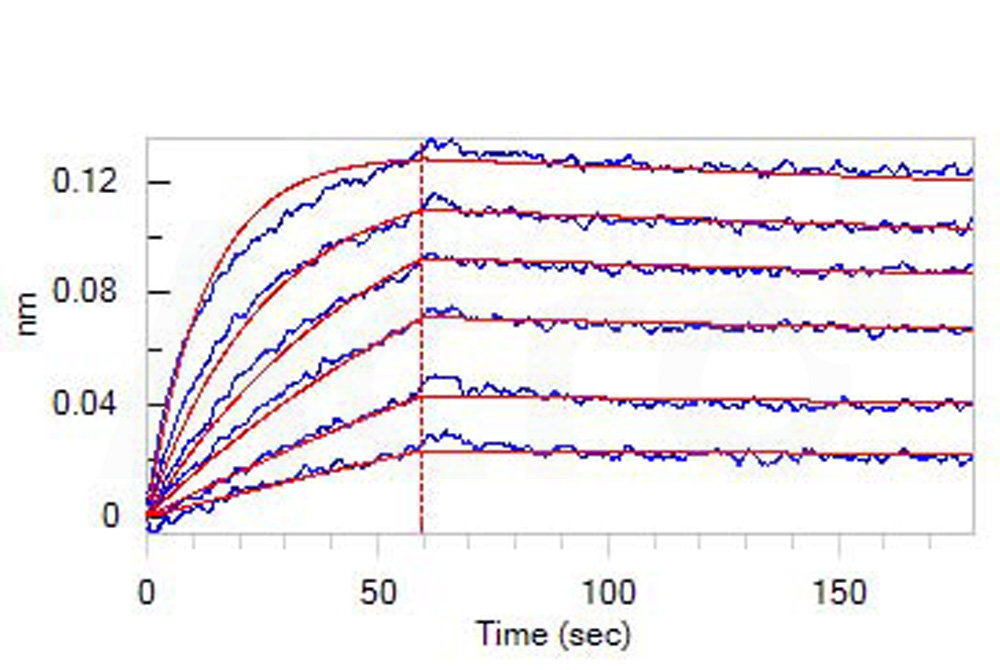
Loaded Anti-Human CD3 mAb, mouse IgG1 (Clone # SP34-2) on AMC Biosensor, can bind Human CD3 epsilon, His Tag (Cat. No. CDE-H5223) with an affinity constant of 0.341 nM as determined in BLI assay (ForteBio Octet Red96e) (Routinely tested).
Protocol
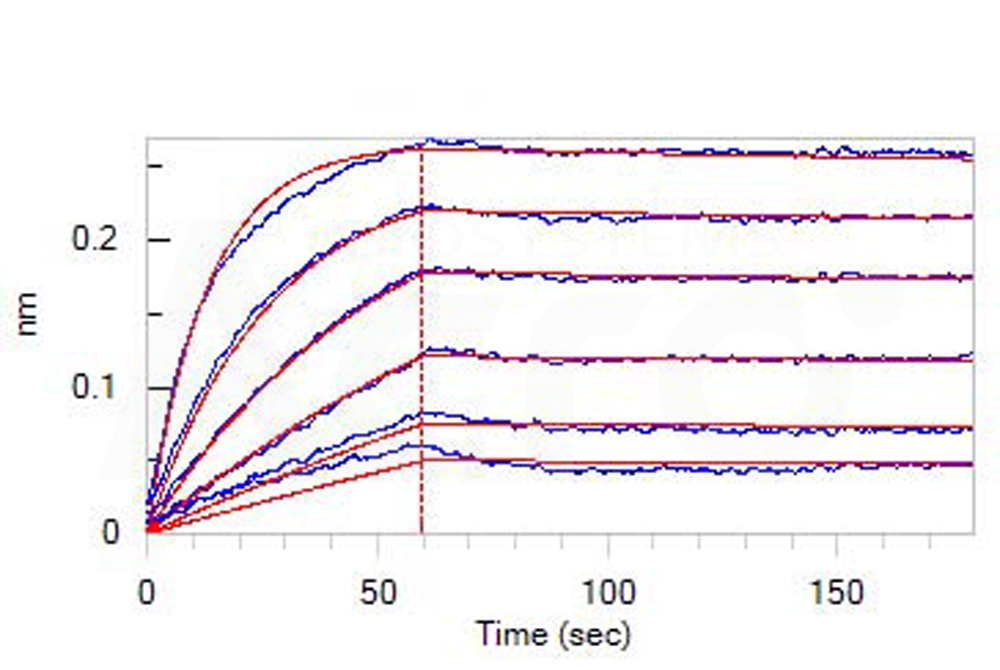
Loaded Bispecific T-cell Engager (CD3 X BCMA) on AHC Biosensor via DMF Filed Human BCMA, Fc Tag (Cat. No. BC7-H5254), can bind Human CD3 epsilon, His Tag (Cat. No. CDE-H5223) with an affinity constant of 0.147 nM as determined in BLI assay (ForteBio Octet Red96e) (Routinely tested).
Protocol
背景(Background)
CD3e molecule, epsilon is also known as CD3E, is a T-cell surface single-pass type I membrane glycoprotein. CD3E contains 1 Ig-like (immunoglobulin-like) domain and 1 ITAM domain. CD3E, together with CD3-gamma, CD3-delta and CD3-zeta, and the T-cell receptor alpha/beta and gamma/delta heterodimers, forms the T cell receptor-CD3 complex. This complex plays an important role in coupling antigen recognition to several intracellular signal-transduction pathways. The genes encoding the epsilon, gamma and delta polypeptides are located in the same cluster on chromosome 11. The epsilon polypeptide plays an essential role in T-cell development. CD3E plays an essential role in T-cell development, and defects in CD3E gene cause severe immunodeficiency. CD3E gene has also been linked to a susceptibility to type I diabetes in women. CD3E has been shown to interact with TOP2B, CD3EAP and NCK2.























































 膜杰作
膜杰作 Star Staining
Star Staining











